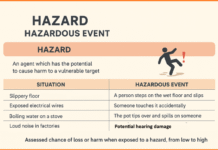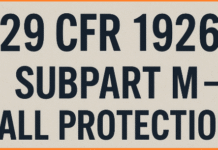With the growth of chemical industry and use of hazardous chemicals, the world had seen many major accidents during last 50 years but the concept of major accident hazard (MAH) control came in our country after Bhopal accident in 1984 only. Thereafter there is a constant rise in bulk storage, hazardous processes and heavy transportation of dangerous chemicals. This needs to realize and take appropriate safety measures to identify and prevent the major accident causes and to mitigate their consequences.
Contents
Concept of MAH:
Some definitions are as under:
For definitions of ‘major accident’ and ‘major accident hazard’ (MAH) see definitions in rule 2 (j) and 2 (ja) of the Manufacture, Storage and Import of Hazardous Chemicals Rules 1989.Major hazard means that hazard which arises because of (1) the hazardous nature of the substance and (2) its storage quantity equals or exceeds the threshold quantity prescribed in MSIHC Rules 1989.
Major hazard is due to isolated storage or industrial activity that has the potential to cause extensive damage to men, materials or environment within or outside the site boundary. The Statutes Manufacture, Storage and Import of Hazardous Chemicals Rules 1989, Rule 68.1 of the Gujarat Factories (Amendment) Rules 1995 and the Chemical Accidents (EPPR) Rules 1996 have defined the term ‘major accident’. See Chapter-28 for these laws.
CLICK HERE FOR ? FACTORY ACT PDF
Some reported major industrial accidents are mentioned below:
| Year | Place | Deaths | Injuries | Chemical involved |
| 1943 | Germany | 57 | 439 | Butadiene & Butylene (butane) |
| 1944 | US | 136 | 77 | Methane, Fire |
| 1948 | Germany | 207 | 3818 | Dimethylether, Explosion |
| 1954 | Germany | 32 | 16 | Kerosene, Explosion |
| 1966 | France | 18 | 90 | LPG, fire BLEVE |
| 1973 | US | 40 | – | LNG, fire |
| 1974 | US | 07 | 152 | Propane explosion |
| 1977 | Columbia | 30 | 25 | Ammonia, toxic release |
| 1978 | Mexico | 52 | – | Methane, fire |
| 1980 | Spain | 51 | 60 | Propane, explosion |
| 1984 | India | 2500 | 25000 | Methyl isocynate, toxic release |
| 1985 | Mexico | 650 | 2500 | LPG, fire BLEVE |
| 1986 | Russia | 31 | 200 | Atomic radiation |
| 1993 | Thailand | 211 | – | Toy factory |
| 1993 | China | 84 | – | Plastic toy factory |
The Bhopal disaster has remained at the top and opened eyes throughout the world regarding major chemical hazards, their consequences and controls.
All such accidents, differing in the mode of happening and the chemical involved, have some Common features as under.
- They are uncontrolled events caused by fire, explosion or/and toxic release.
- They resulted in death or/and injury of large number 0f people, inside or/and outside the plant, or/and.
- They caused evacuation of people of the surrounding area, or/and.
- They caused heavy damage to plant, property and environment.
The storage, process, use and handling of such flammable, explosive or toxic chemical pose high potential to cause disasters and are normally referred as major hazards. Their potential is due to their inherent nature (property) of the chemicals, their quantity, type of process, way of handling or sudden failure of some part of the plant including vessel, equipment, fitting, pipe and vehicle.
CLICK HERE FOR ? SAFETY INDUCTION AND TRAINING
The main Objectives of major hazard control System are
- To distinguish between minor and major accident potential and to set priority for identification and inspection of major hazard works first or more frequently.
- To define hazardous chemical by defining its fire, explosion and toxicity criteria and to define their threshold quantities for storage and use to classify the work as MAH installation.
- To define and list the hazardous processes to identify the unit as MAH installation.
- To make, enact and implement the law for MAH chemical works or isolated storage by providing statutory provisions and requirements.
- To identify the major hazards, developing and utilizing the Special techniques like hazard and risk assessment, HAZOP, PTA, ETA, consequence analysis, vulnerability analysis, environmental impact assessment etc as mentioned earlier and carrying out plant safety inspection.
- To take all possible preventive measures based on identified major hazards to prevent the causes of such hazardous events. Training and education may be incorporated.
- To foresee the consequences on the workers, public and environment in case if any possible major accident may occur, and to work out an emergency action plan to control and mitigate the effects.
Components of major hazard control system
- Definition and identification of MAH installation based on types of hazards.
- Information about the installation safety report; safety manual etc. Information should be given to workers, public and authorities.
- Assessment of major hazards, by works management and competent authorities Cause, effects, consequences and safety measures must be assessed.
- Control of the causes of major industrial accidents by detecting causes and following sound engineering and management practices e.g. good design, fabrication, installation, Operation, maintenance, inspection and use of good safety equipment and instrumentation.
- Safe Operation of major hazard installations by training to workers, following SOPs and investigating accidents and near misses.
- Emergency planning i.e. on-site and off-site emergency plans and their regular rehearsals.
- Sitting and land-use planning by ensuring safe separation distances.
- Inspection of MAH units by the plant management and also by the Govt. authorities at [Op priority and more frequently. Causes of major accidents to be studied include component failure, deviations from normal operating conditions, human and organizational errors, outside accidental interference, natural forces, mischief and sabotage.
CLICK HERE FOR ? HIRAC AND JSA
Safe operation of MAH installation should pay attention on:-
- Design, manufacture and assembly components,
- Process control,
(3) Safety systems (sensors, controllers, pressure relief, emergency shutdown, bunds, water spray, fire detector etc.),
- Monitoring of safety-related components and systems,
- Inspection, maintenance and repair,
- Effects of change,
- Training of workers,
- Supervision and Control of contract work.
Types and Consequences of Major Accident Hazards:
Generally fire, explosion and toxic release are the main types of major hazards and death, injury, evacuation of people, property loss and environmental damage are the main types of their consequences.
Fire can cause thermal radiation and skin bums. The severity (degree and percentage) of burns depends on heat intensity, exposure time and type of clothing.
Generally skin withstands heat energy of 10 kW/m2 for 5 seconds and 30 kW/m2 for only 0.4 seconds before pain is felt. Frequency of fires in industry is more than explosions and toxic releases but its lethal effects are comparatively less. However if the ignition. of escaping flammable vapour is delayed an unconfined vapour cloud may form and it may explode if ignited. Types of fire may be a jet fire, pool fire, flash fire and BLEVE boiling liquid evaporating vapour explosion. A jet fire occurs from an ignited gas pipe leak, a pool fire from drained material in a dyke, flash fire occurs if the gas reaches a source of ignition and rapidly burns back to the source of release and BLEVE occurs when flammable vapour leaking from any vessel or pipe expands and disperses in air as a t cloud and when this cloud is ignited. Then a fire ball occurs causing enormous heat radiation. A BLEVE from a 50 tonne propane tank can cause third-degree burns at @200mts and blisters at @400 mts.
Explosion is a shockwave that can damage where it hurts. Primary or direct effect is due to the shock-wave of the explosion itself. Those in the direct vicinity may die due to effects of over-pressure. People can also be thrown away, blown over or knocked down and buried under collapsed materials. Secondary or indirect effect is the effect of shock-wave generated by the primary effect. The history of explosions show that the indirect effects of collapsing buildings, flying or broke glasses and debris cause far more deaths and injury
CLICK HERE FOR ? FIRE SAFETY
The effects of shock-wave depend on the type 0 material, its quantity and the degree of confinement o the vapour cloud. A pressure of 5 to 10 kpa can cause direct injury_ Death may occur at a higher pressure demolition of building or breaking of windows occu at 3 to 10 kpa. The pressure decreases rapidly with distance. As an example, the explosion of a 50 tonne propane tank can cause a pressure of 14 kPa at 25( mt and 5 kPa at 500 mt.
Types of explosion are deflagration, detonation confined and unconfined vapour cloud explosion and gas and dust explosion. When burning velocity or flame speed is slow ( 1 to 10 m/sec), deflagration takes place in a confined space. It generates low pressure ( 70-80 kPa). When flame speed is very high-(2000-3000 m/ sec), it causes detonation and generates high pressure like 200 kPa. Sone degree of vapour confinement i5 necessary.
Explosion in a confined place like vessel, pipe work, drain or building is called confined explosion and that occurring in the Open air is called unconfined explosion. Confined explosion causes higher pressure and may reach up to hundreds of kPa. Explosion of a vapour cloud after heavy leakage of a flammable gas is called gas explosion. Large vapour cloud can cause unconfined vapour cloud explosion (UVCE), boiling liquid expanding vapour explosion (BLEVE) or fire ball. Explosion of a solid material in the ferrn of dust, powder or small particles mixed with air is called dust explosion. Grain, milk powder, flour and coal dust are flammable dusts. Effect of dust explosion is mostly confined to the workplace.
Toxic releases are caused due to leakage and dispersion of toxic chemicals (gas or vapour) in air. As the Workers are working nearby they can be affected first. Therefore workplace monitoring, air/ gas sampling, environmental monitoring etc.
CLICK HERE FOR ? LINE OF FIRE
Consequences of toxic release are influenced by wind Speed, weather condition, leak rat or mass released, toxicity (LD/LC) and concentration.(ppm) at a particular place: and also by age, sex, genetic background, ethniic grouping, nutrition, vulnerability (old or tender age, sickness, disease), exposure to other substances with synergistic effects, pattern of work and time of exposure.
Chlorine, Ammonia and other chemicals like methyl isocyanide have caused disasters Study of toxicity and consequence analysis of such chemicals and advance emergency planning are most essential. For example, instantaneous release of 10 tonnes chlorine may produce 14O ppm at a 2 km downwind distance and 15 ppm at a 5 km distance in D5 weather. Chlorine can be lethal at 1000 ppm or at 100-150 ppm for 5-10 minutes. Us effect is dangerous even at 10-20 ppm for 30 minutes. Such data should be kept ready by all major hazard works in respect of their highly toxic chemical with effect (distance and ppm) counters of surrounding area.





